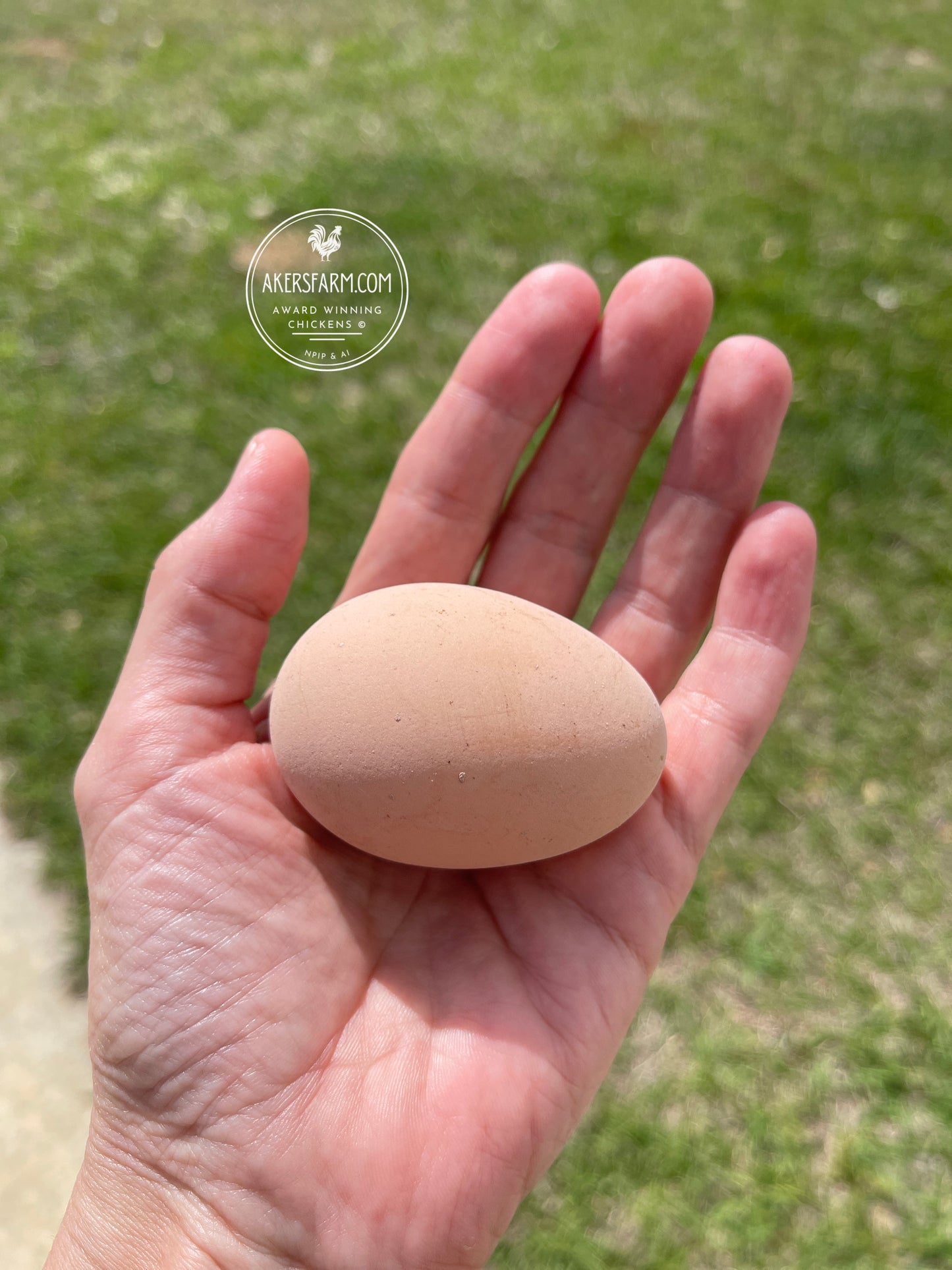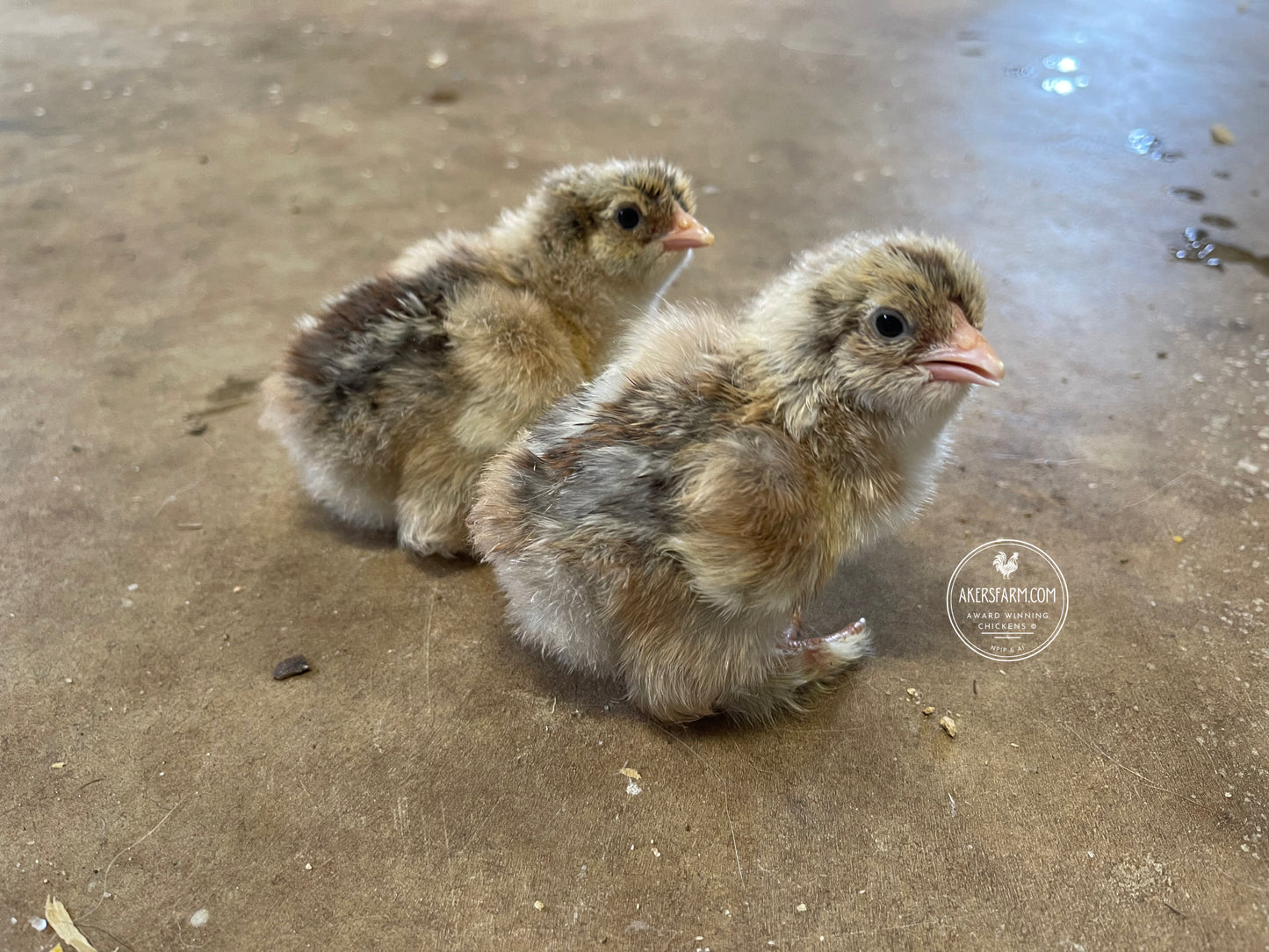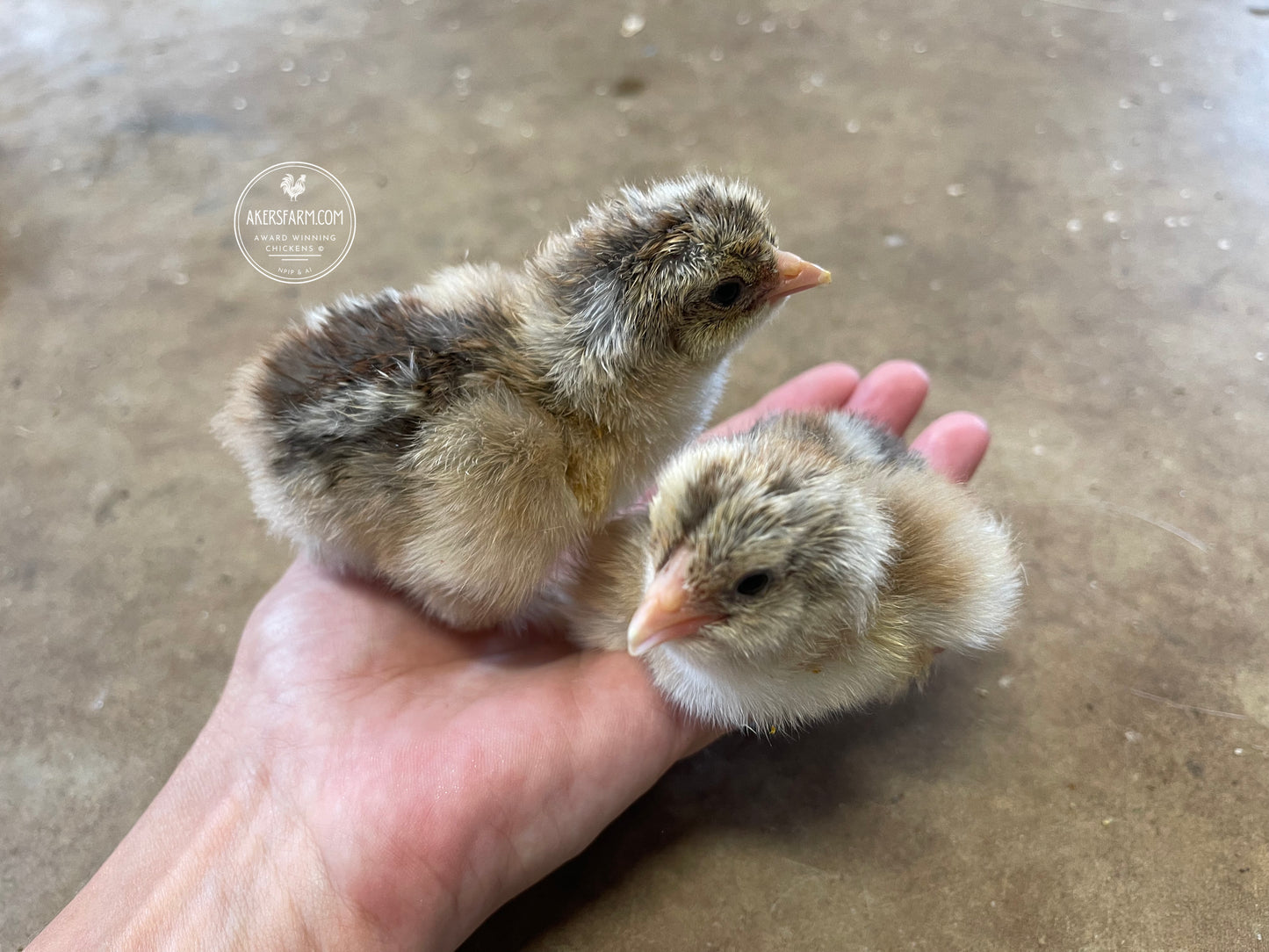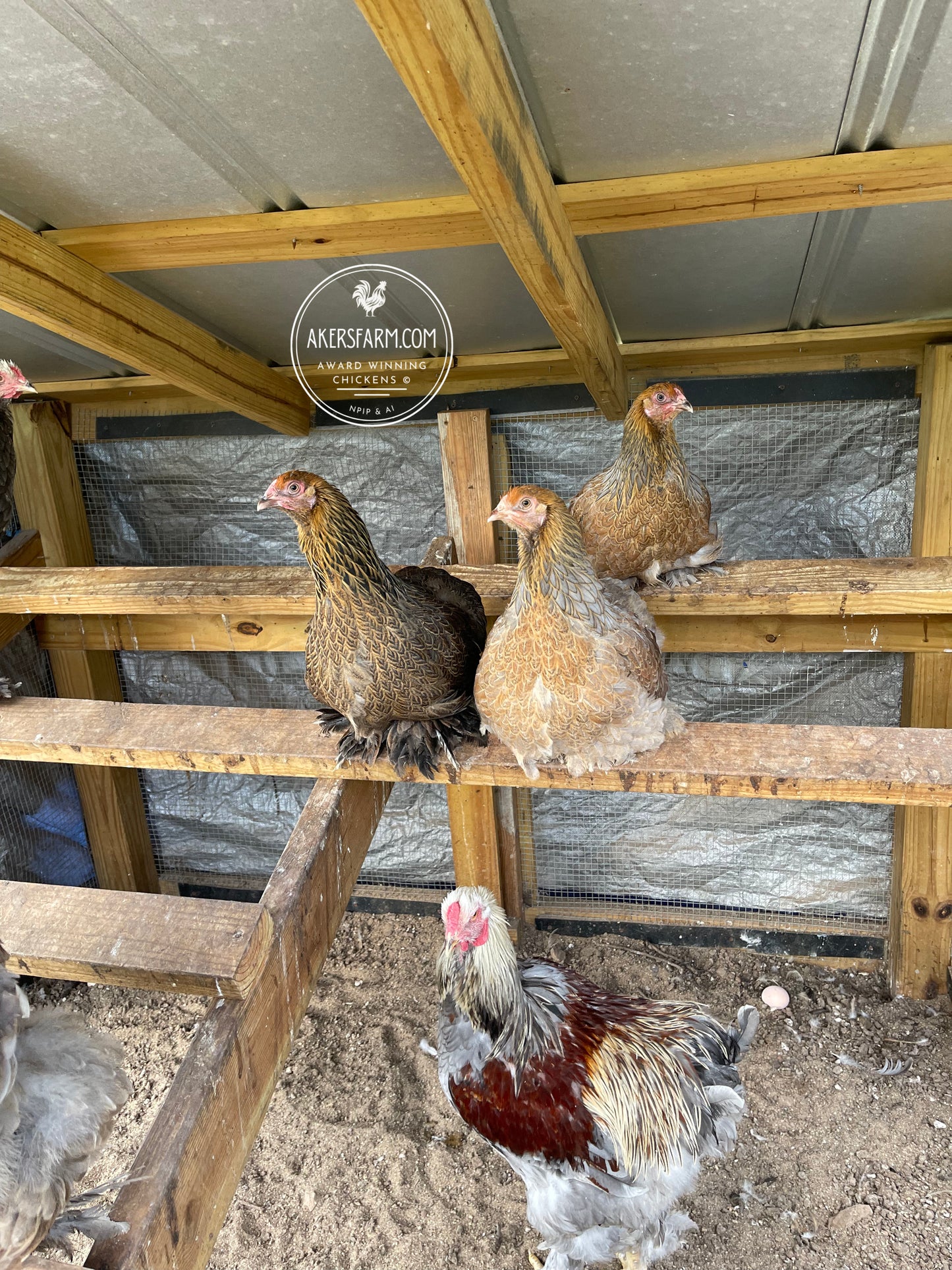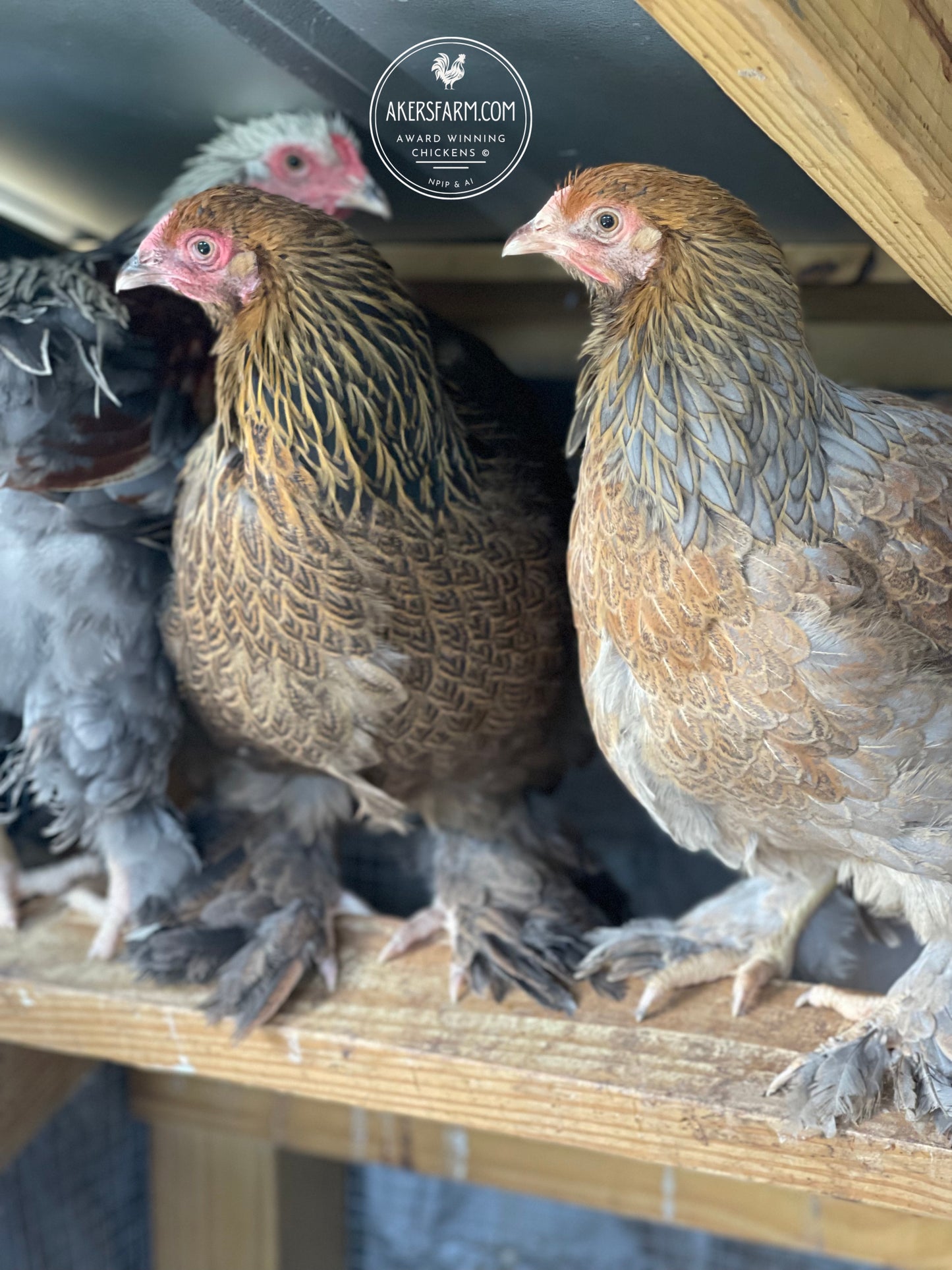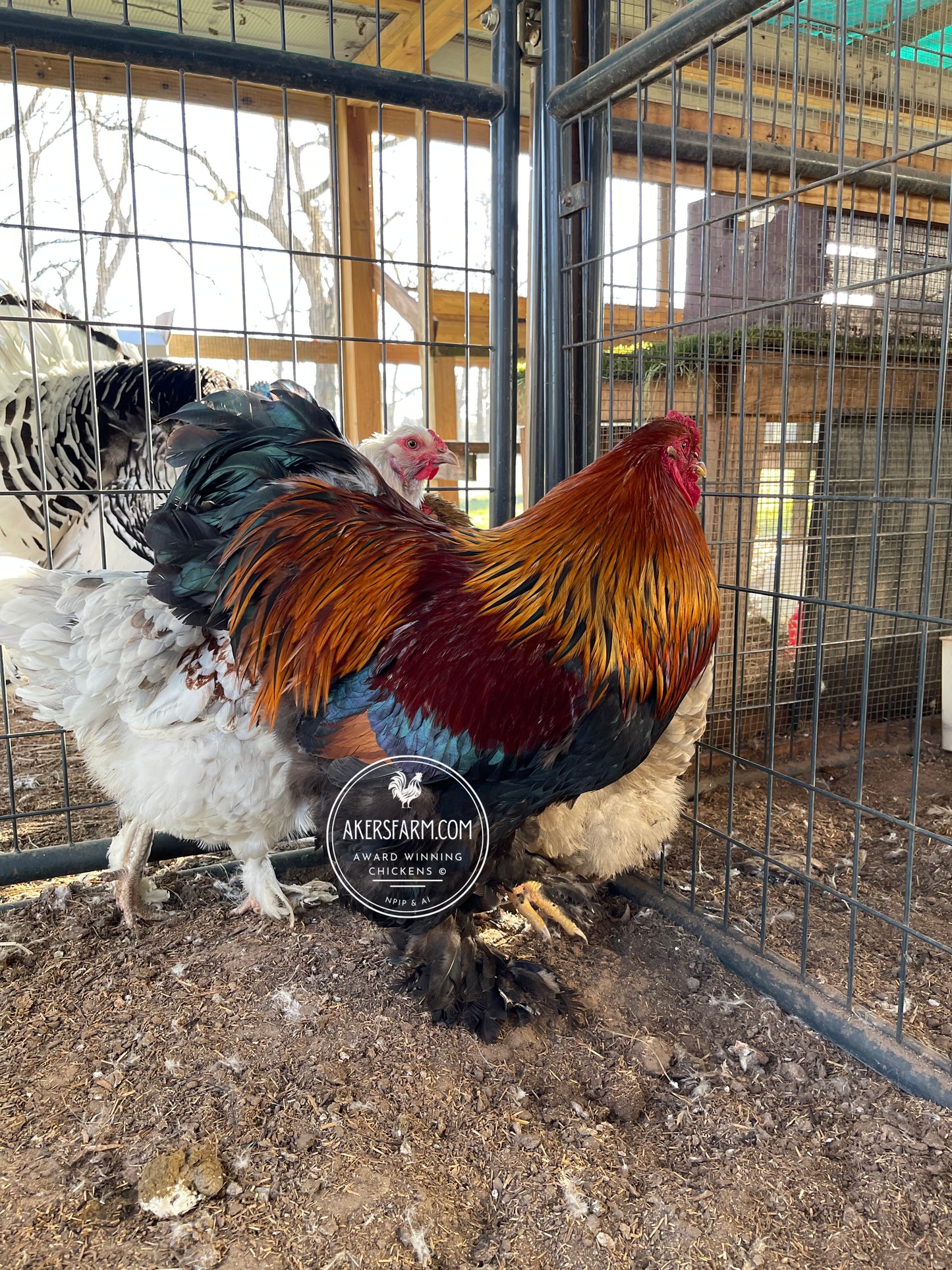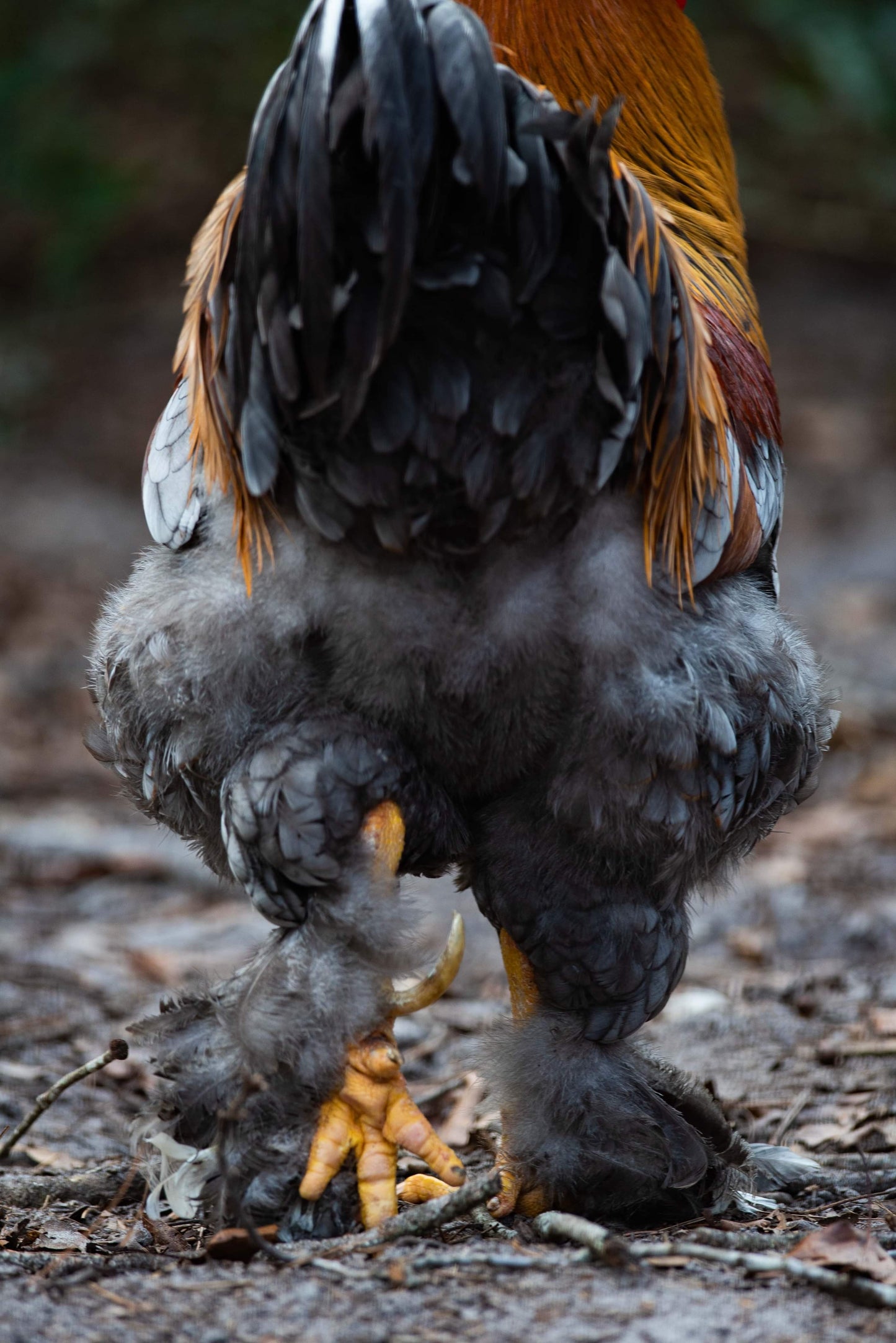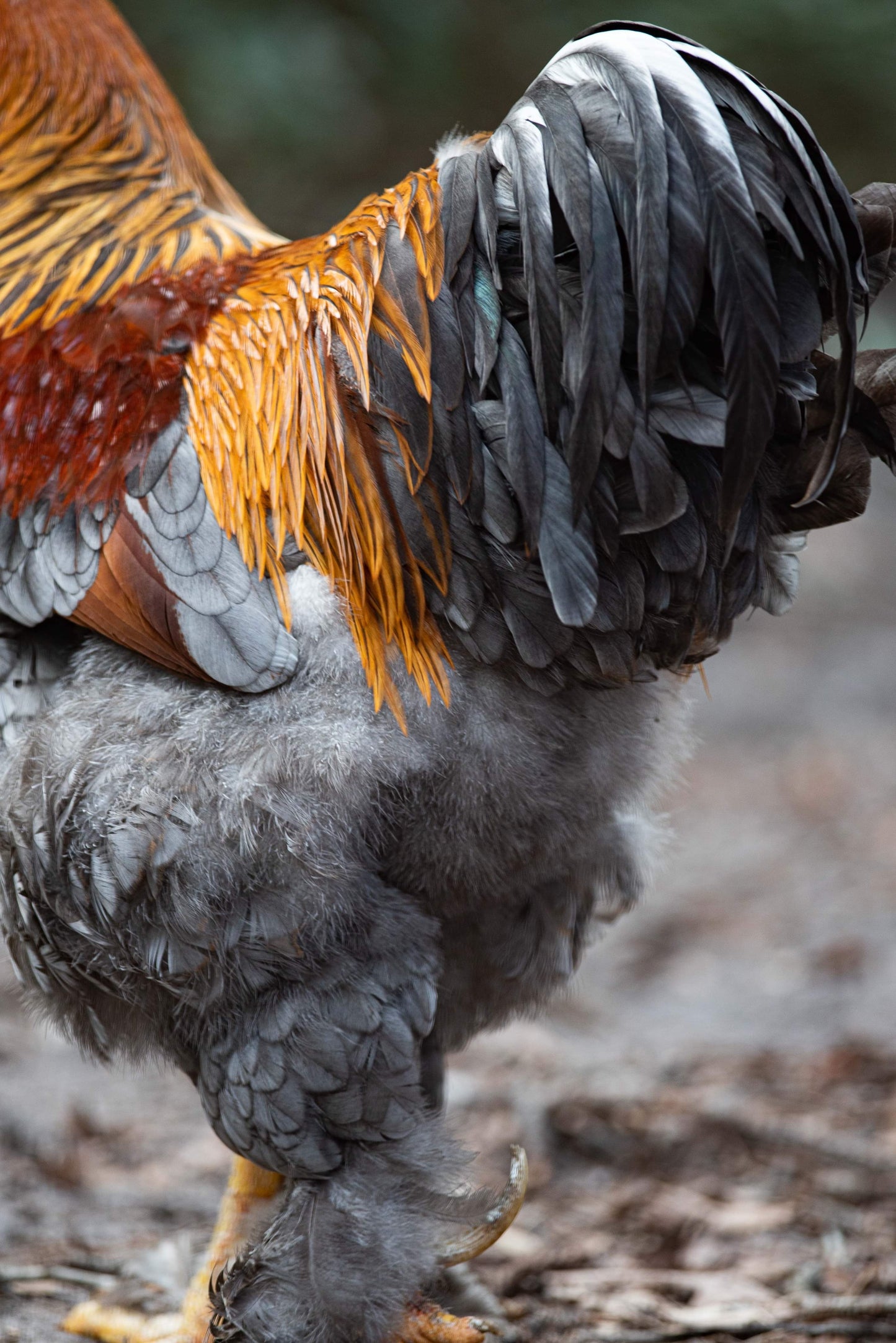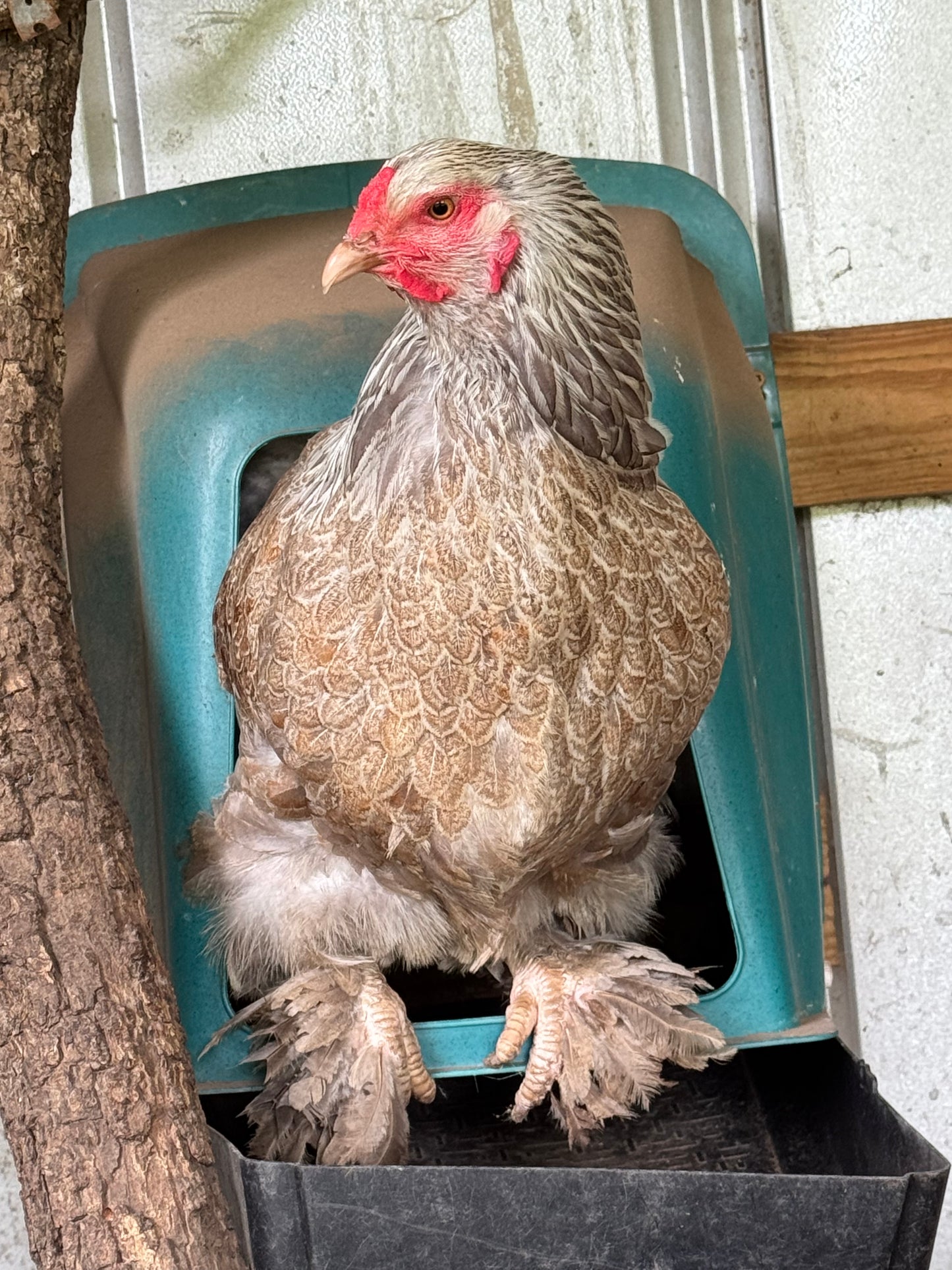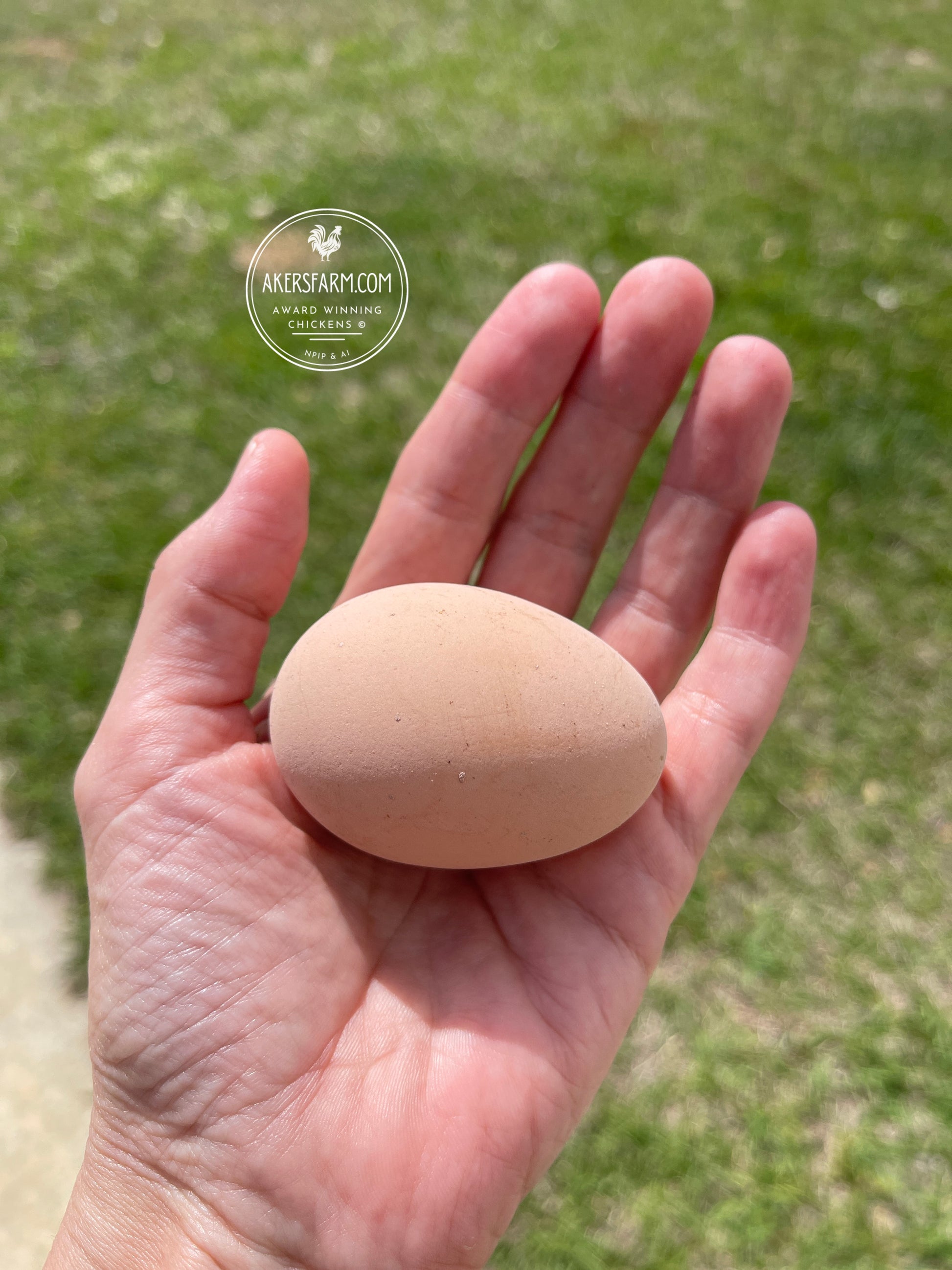Silver/Gold Genetics
Silver (S) and gold (s⁺) are two versions (alleles) of the same gene that control whether a chicken’s base color is silvery-white or warm golden-red. Silver masks the red pigment, while gold allows it to show through. Because this gene is sex-linked, roosters and hens pass it down differently — which is why it’s one of the easiest places to start learning chicken color genetics. This page keeps it simple and breaks down how the alleles work so you can predict what you’ll hatch with confidence.
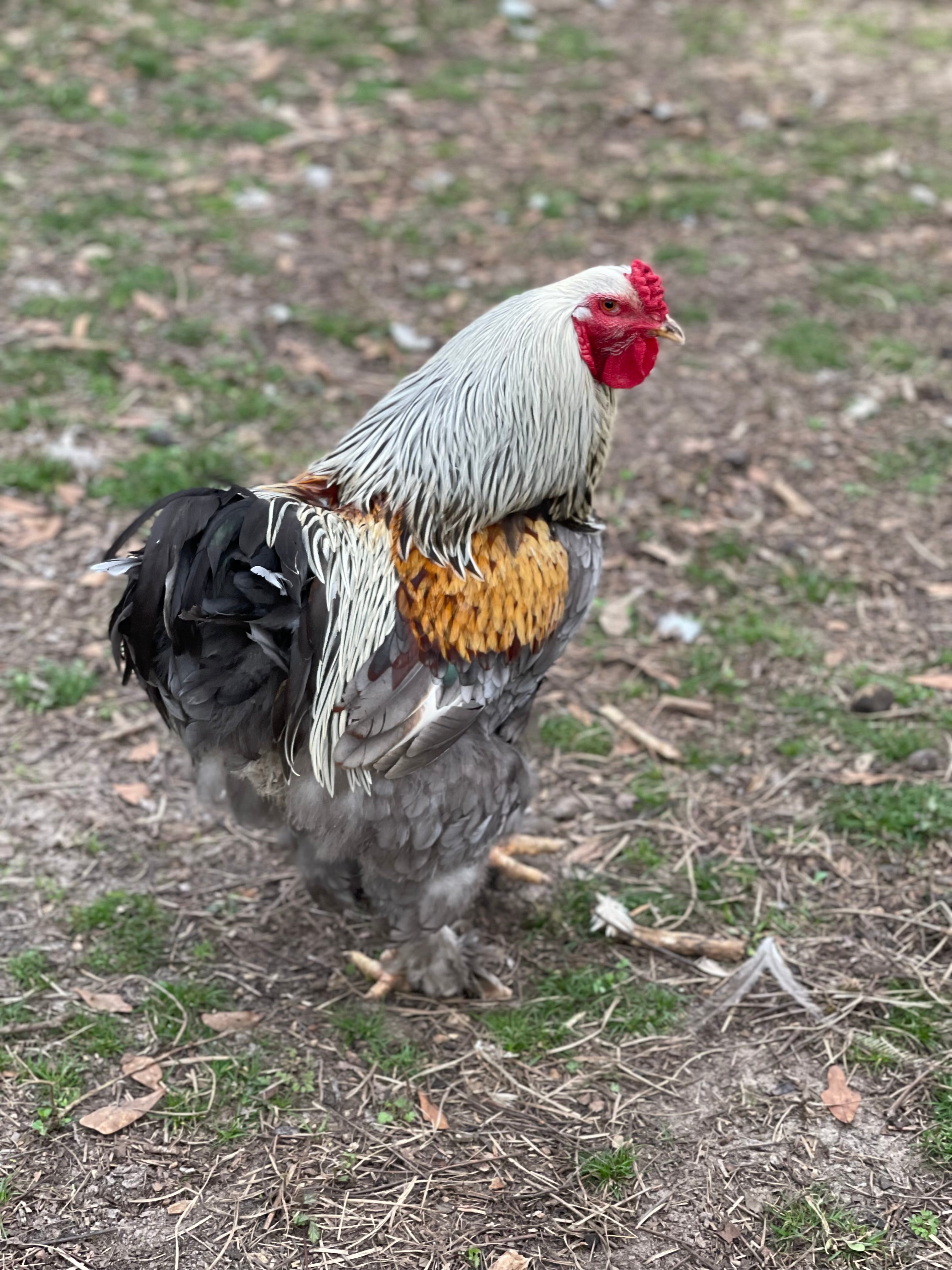

Siver/Gold: Sex linked Inheritance

Chicken Genetics: Silver vs. Gold
Understanding the silver (S) and gold (s⁺) alleles is one of the easiest ways to dip into sex-linked chicken genetics. These are two versions of the same gene located on the sex chromosome (Z), which means roosters and hens pass them down differently. Because the alleles are sex-linked, the outcome of a cross doesn’t just depend on which alleles are present, but also on which parent contributes them. This is why certain pairings, like a silver hen bred to a gold rooster, are called sex-linked crosses—the chicks’ color reveals their sex as soon as they hatch.
Let’s break it down and simplify it a bit more…
What does it mean to be silver or gold?
- Silver (S):
A dominant, sex-linked allele. It blocks pheomelanin (the red/gold/yellow pigment), so areas that would normally be golden instead appear white or silvery. It does not affect eumelanin (black/blue pigments).
Because silver is dominant, a single copy is enough for the effect to show. A rooster can carry two copies (S/S) or one copy (S/s⁺), while a hen only needs one copy (S/–) to appear silver. This is why silver often shows up strongly in breeding — it “covers” gold whenever it is present.
- Gold (s⁺):
The wild-type (normal) allele. It allows pheomelanin to be expressed, so the feathers show warm gold, red, or yellow tones. Gold is recessive to silver, meaning it is only visible when no silver allele is present. Roosters must be s⁺/s⁺, and hens must be s⁺/–, to appear gold.

Why is it sex-linked?
Chickens have sex chromosomes called Z and W:
- Roosters are ZZ (they carry two Z chromosomes).
- Hens are ZW (they carry only one Z chromosome).
Because the silver/gold gene is located on the Z chromosome, the way it is passed down depends on which parent carries it. Roosters can carry two copies of silver or gold, while hens can only carry one copy. This difference is why the inheritance pattern looks different depending on whether the father or the mother contributes the silver allele.
This also explains why the traditional sex-linked cross (a silver hen bred to a gold rooster) is so predictable. Sons always inherit the mother’s silver allele and are therefore silver, while daughters always inherit the father’s gold allele and are therefore gold. The sex of the chick is “linked” to which color allele it inherits, making it possible to tell cockerels and pullets apart by color as soon as they hatch.
Breeding Examples
1. Silver rooster × gold hen
- If the rooster is pure silver (S/S):
All sons will be silver (100% S/s⁺).
All daughters will be silver (100% S/–). - If the rooster is split silver (S/s⁺):
Sons will be 50% silver (S/s⁺) and 50% gold (s⁺/s⁺).
Daughters will be 50% silver (S/–) and 50% gold (s⁺/–).
***Note the fastest way to determine if your Silver rooster is a split is to breed him to a gold hen.***
2. Silver hen × gold rooster
This is the classic sex-link cross used by many breeders and hatcheries:
- All sons will be silver (100% S/s⁺)
- All daughters will be gold (100% s⁺/–)
This pairing is called a sex-linked cross because the chicks’ down color can often reveal their sex on the day they hatch:
- Cockerels (males) inherit the silver allele from their mother and hatch lighter-colored.
- Pullets (females) inherit gold from their father and hatch darker-colored.
This method allows breeders to visually separate males and females at hatch without vent sexing, which is why sex-linked-crosses became popular in commercial breeding programs.
Side Note: How Silver Is Passed Down
The silver (S) and gold (s⁺) alleles are carried on the Z chromosome, which makes their inheritance a little different from most traits.
- Roosters (ZZ): Pass one Z chromosome to every chick. Sons and daughters both receive a silver or gold allele from their father.
- Hens (ZW): Have only one Z chromosome. They pass this Z only to their sons. Their daughters inherit the W chromosome, which does not carry silver or gold.
🐓 This means:
- Daughters always inherit their silver or gold allele from their father.
- Sons inherit one allele from each parent.
- Mothers pass silver or gold only to sons, never to daughters.
This simple difference explains why the outcomes of silver × gold matings are so predictable, and why these crosses are used in classic sex-link breeding.
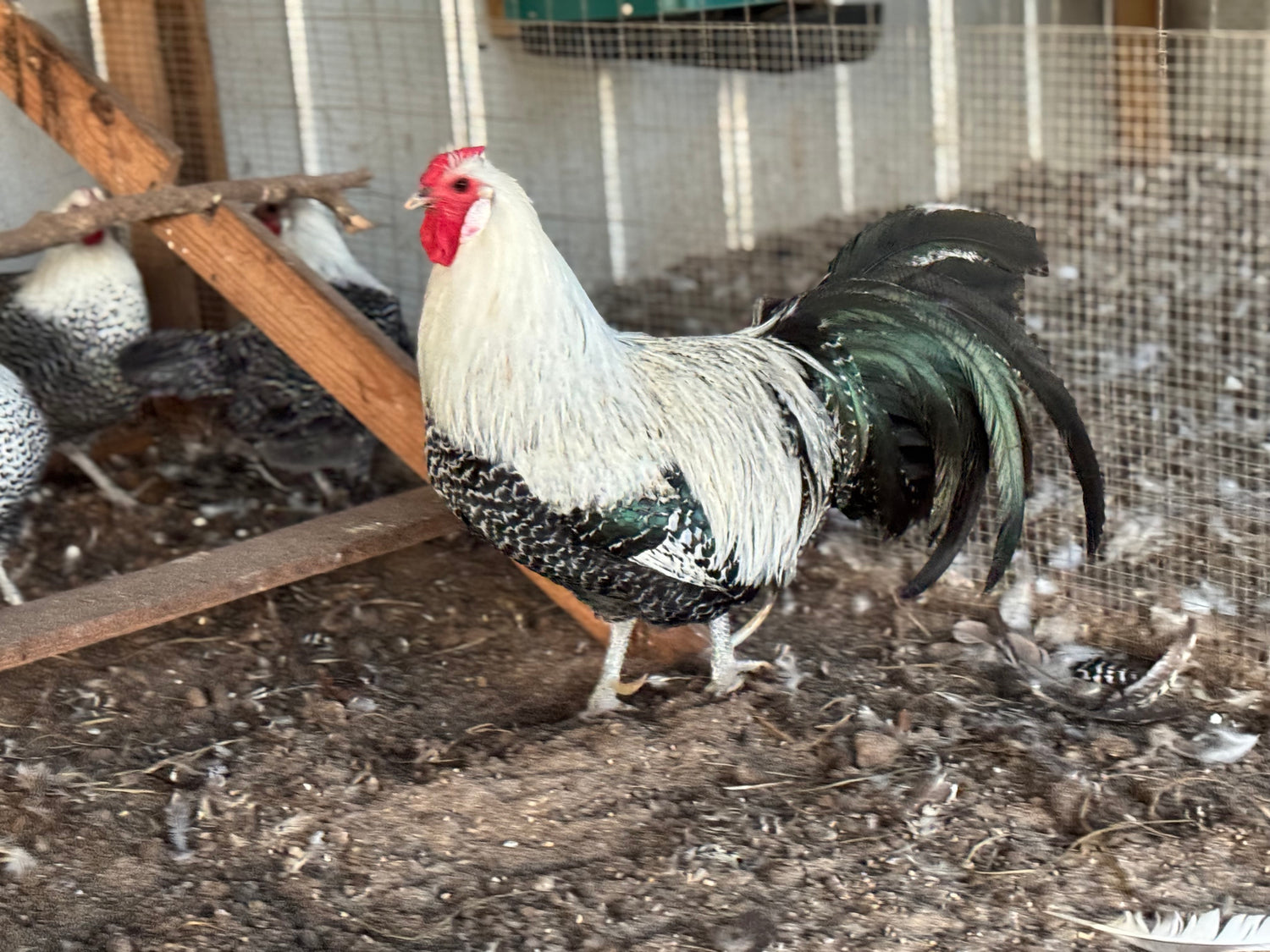
Find our Silver/Gold Breeds
If you’re interested in our stunning Silver and Gold breeds, you’ll love seeing how these genetics play out in their striking feather patterns. Our silver varieties display cool, elegant tones that showcase their refined appearance, while our gold varieties shine with warm, rich hues that bring vibrancy to any flock. These breeds are carefully selected to highlight the beauty of their melanin expression, whether you prefer the sleek look of silver or the bold glow of gold. Explore the options below and find the perfect addition to your flock!
Akers Farm
Silver Deathlayer Hatching Eggs
Share



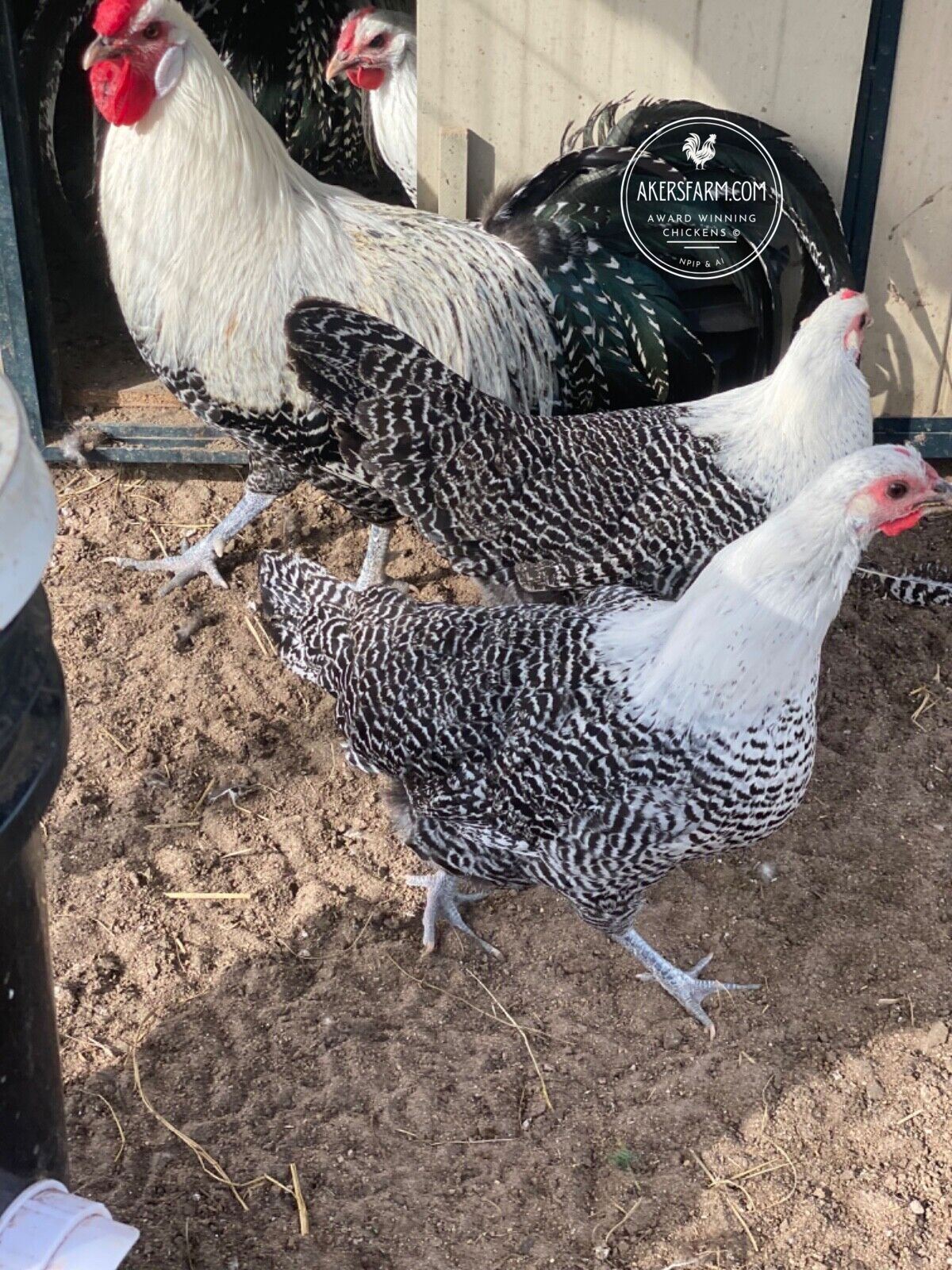
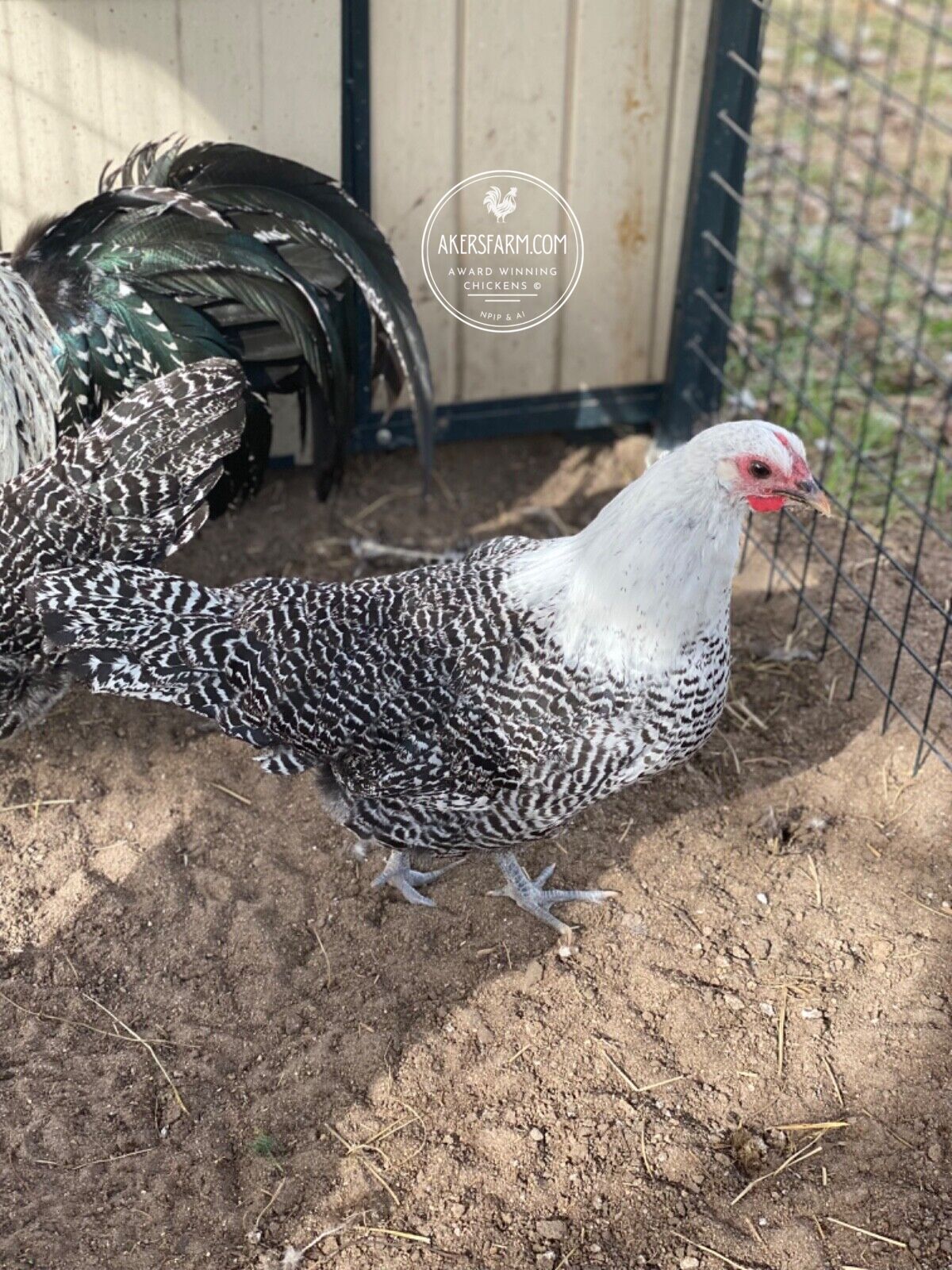

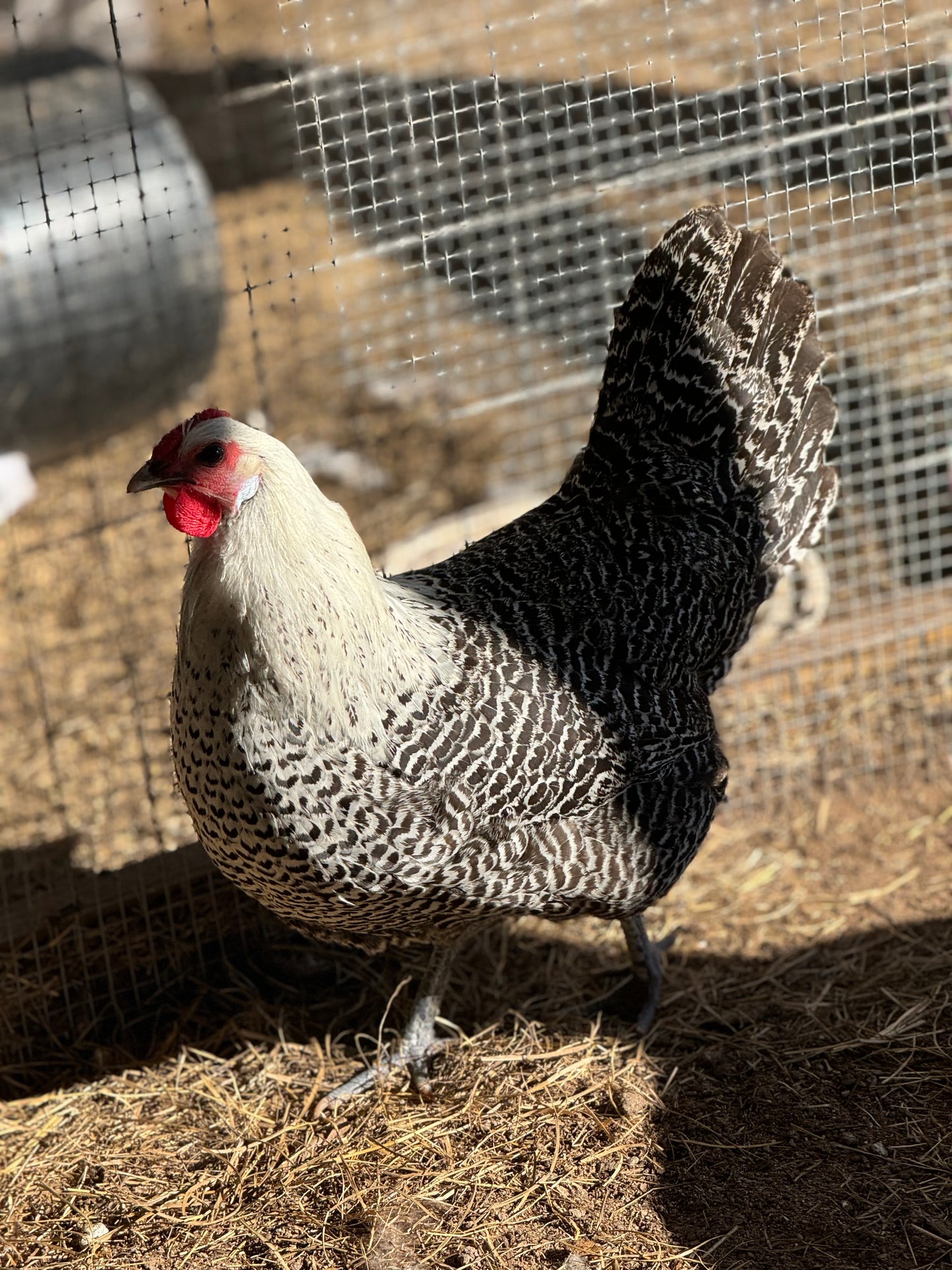
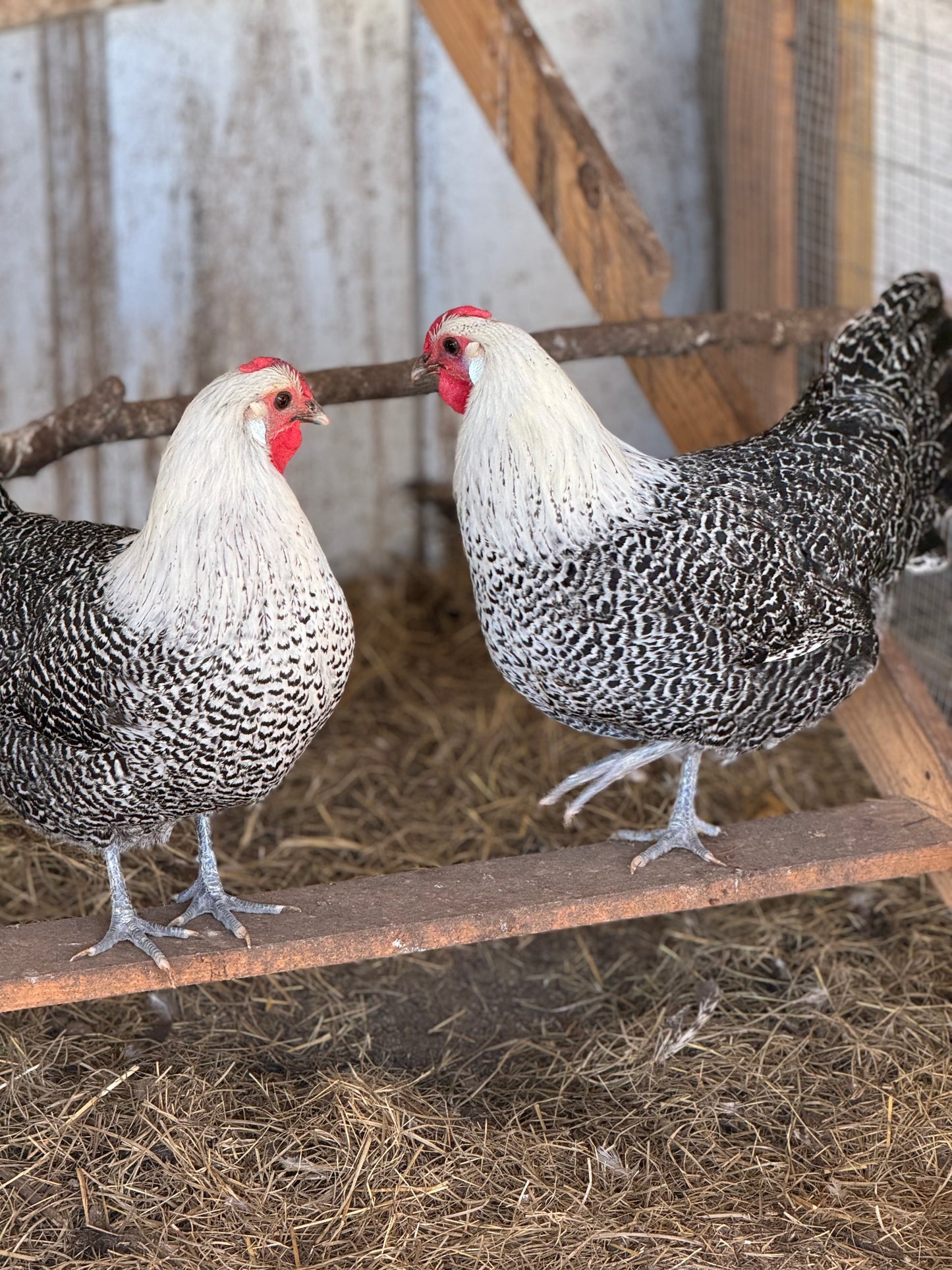


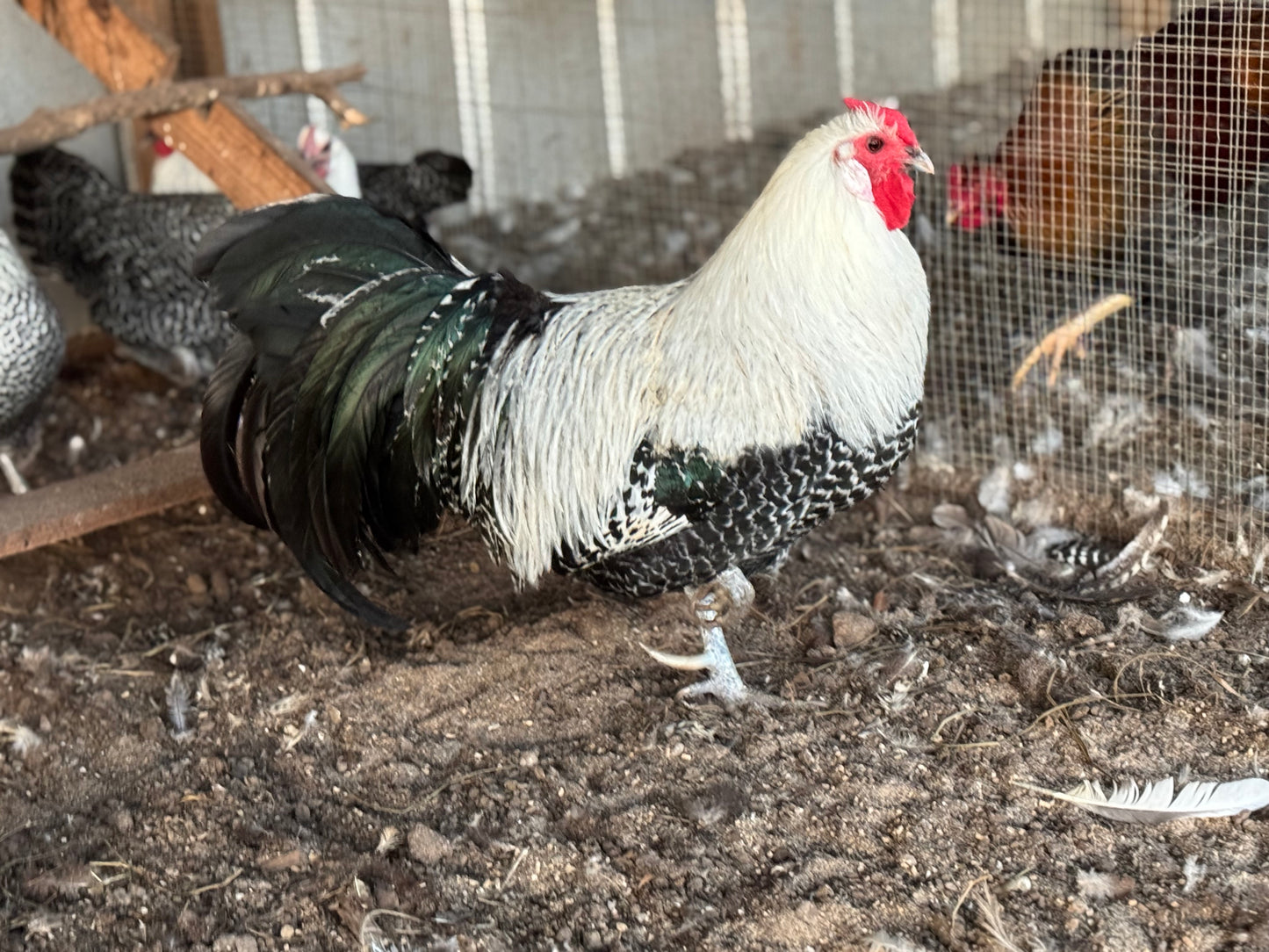
Akers Farm
Siver pencil laced Silkie/Satin/Frizzle NPIP & AI
Share

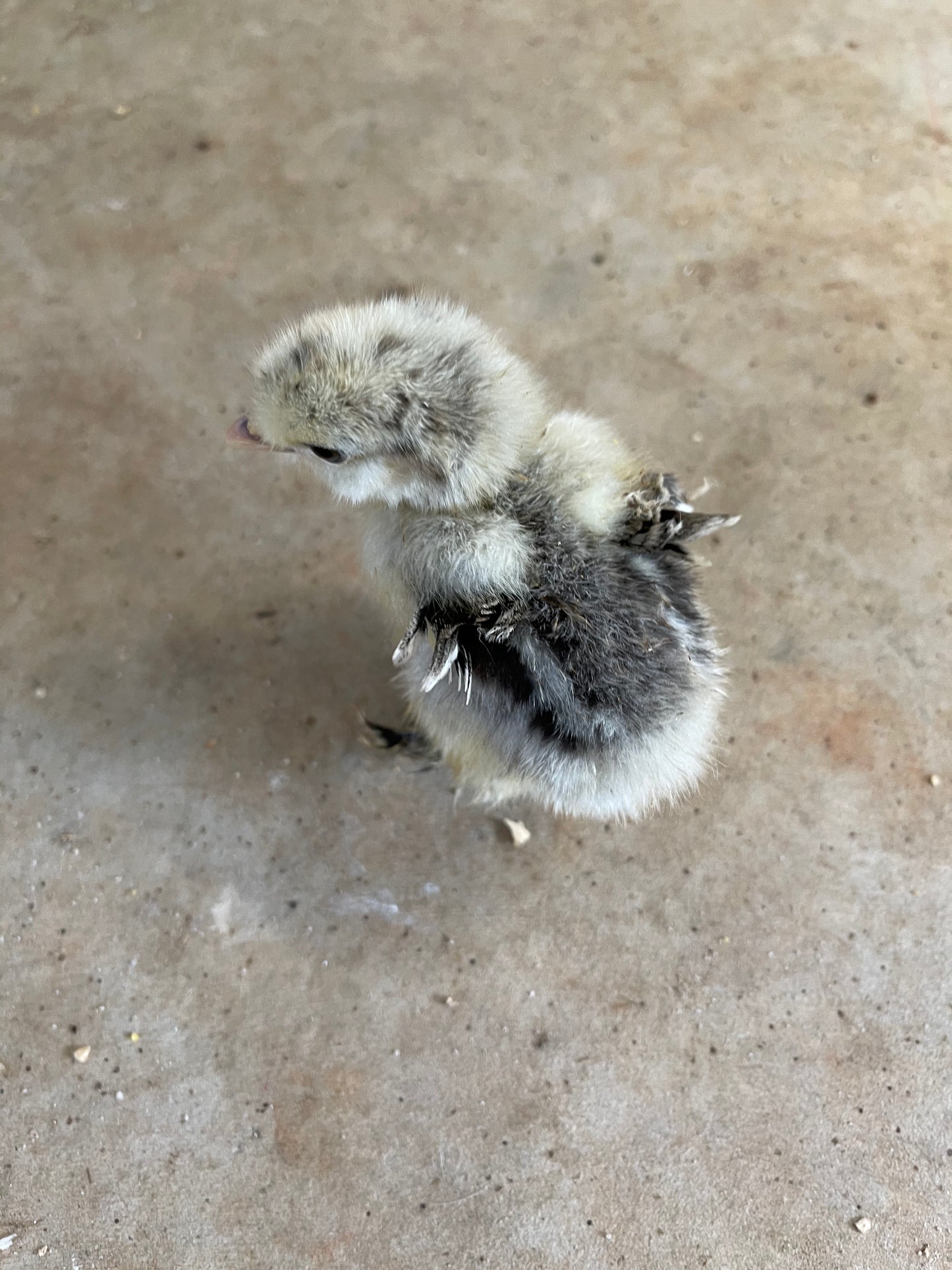

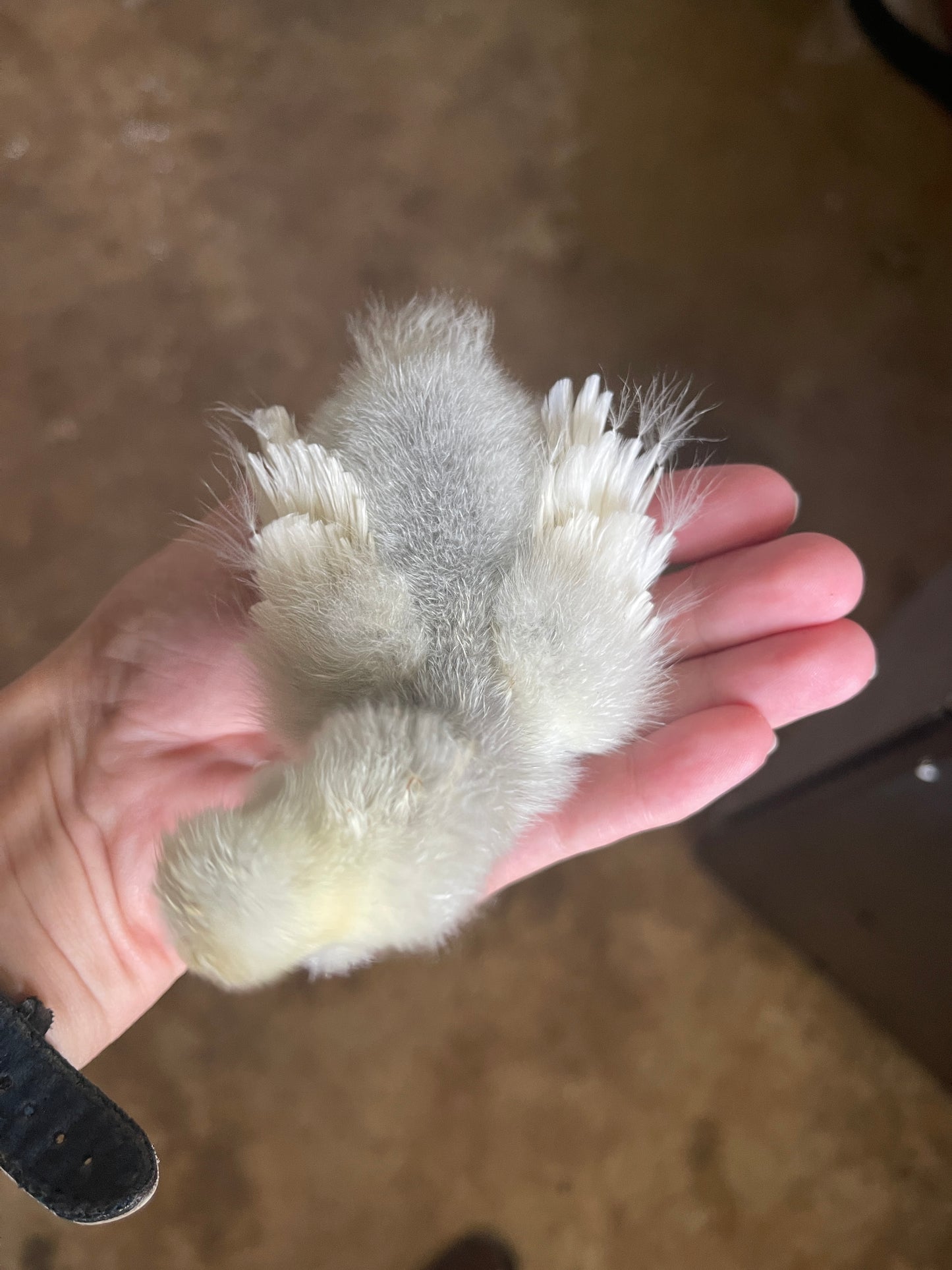


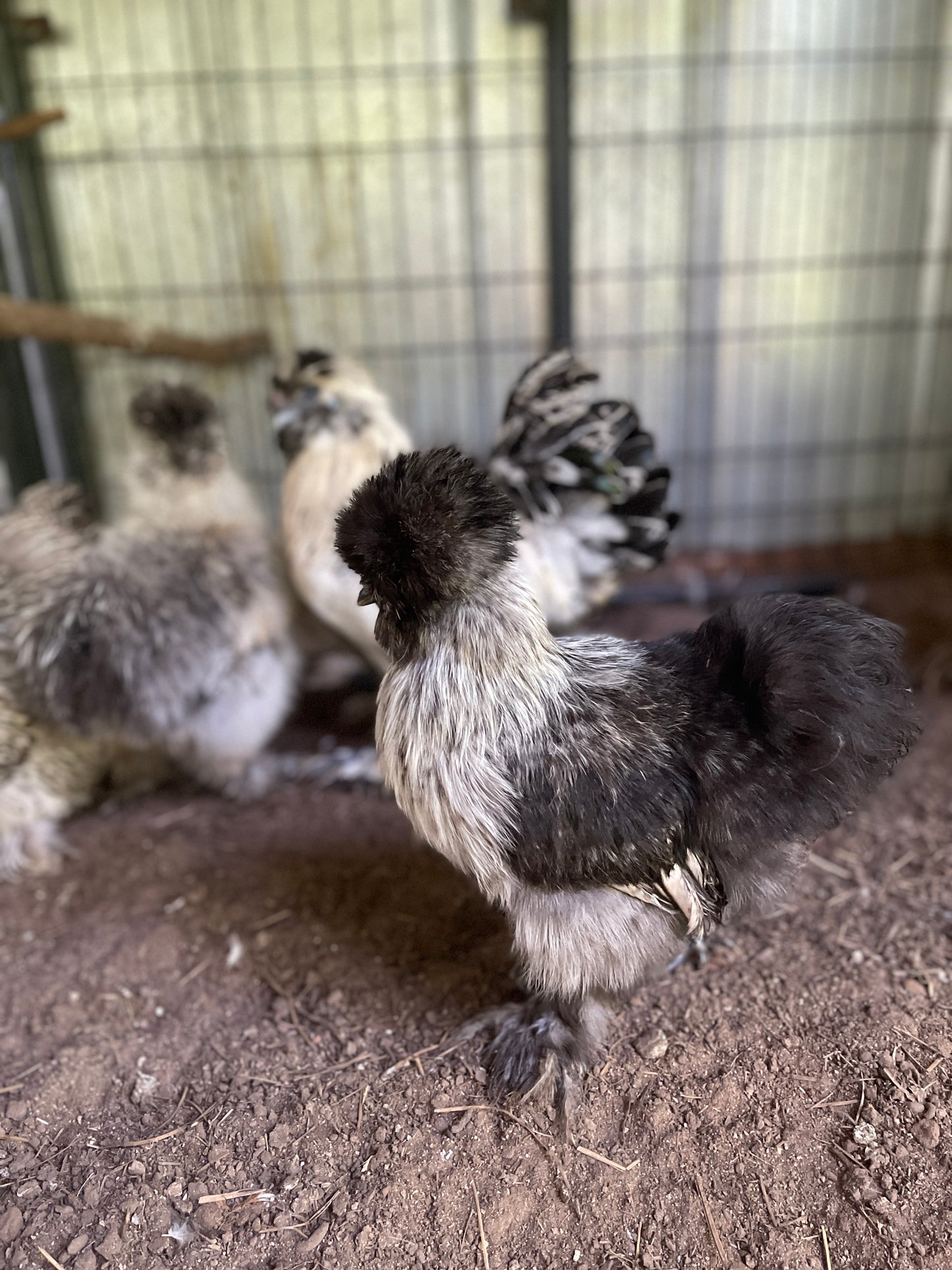
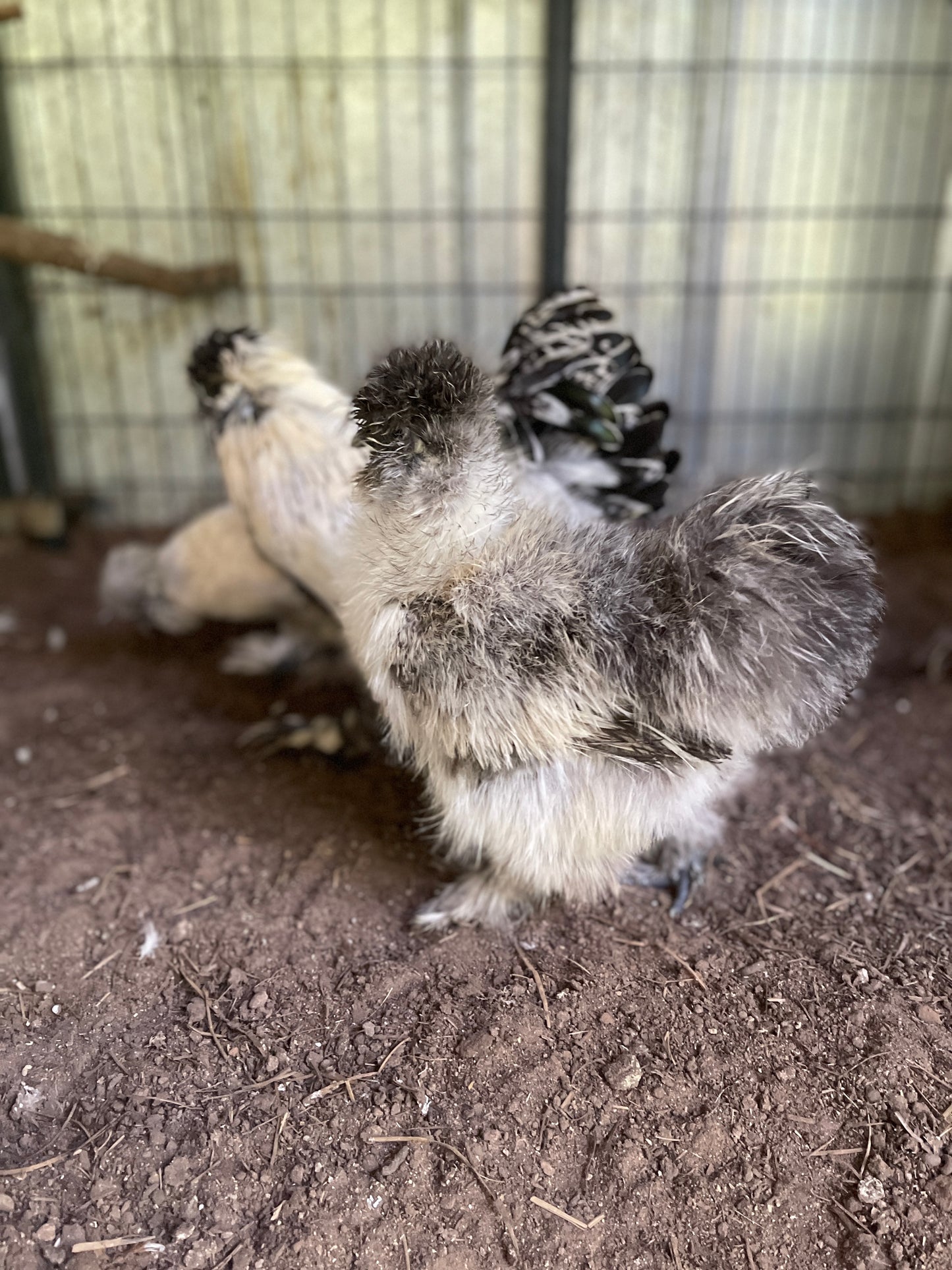

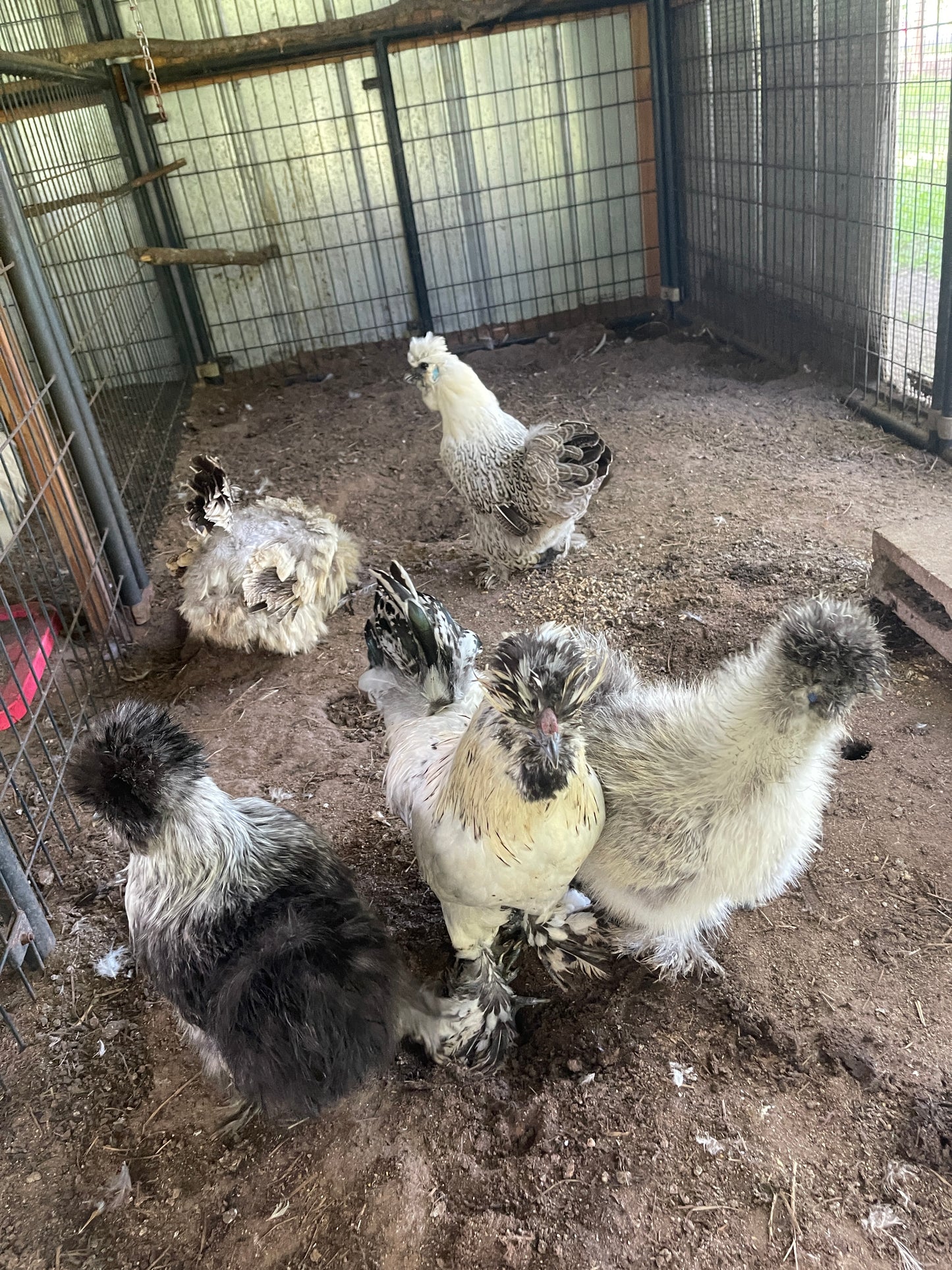

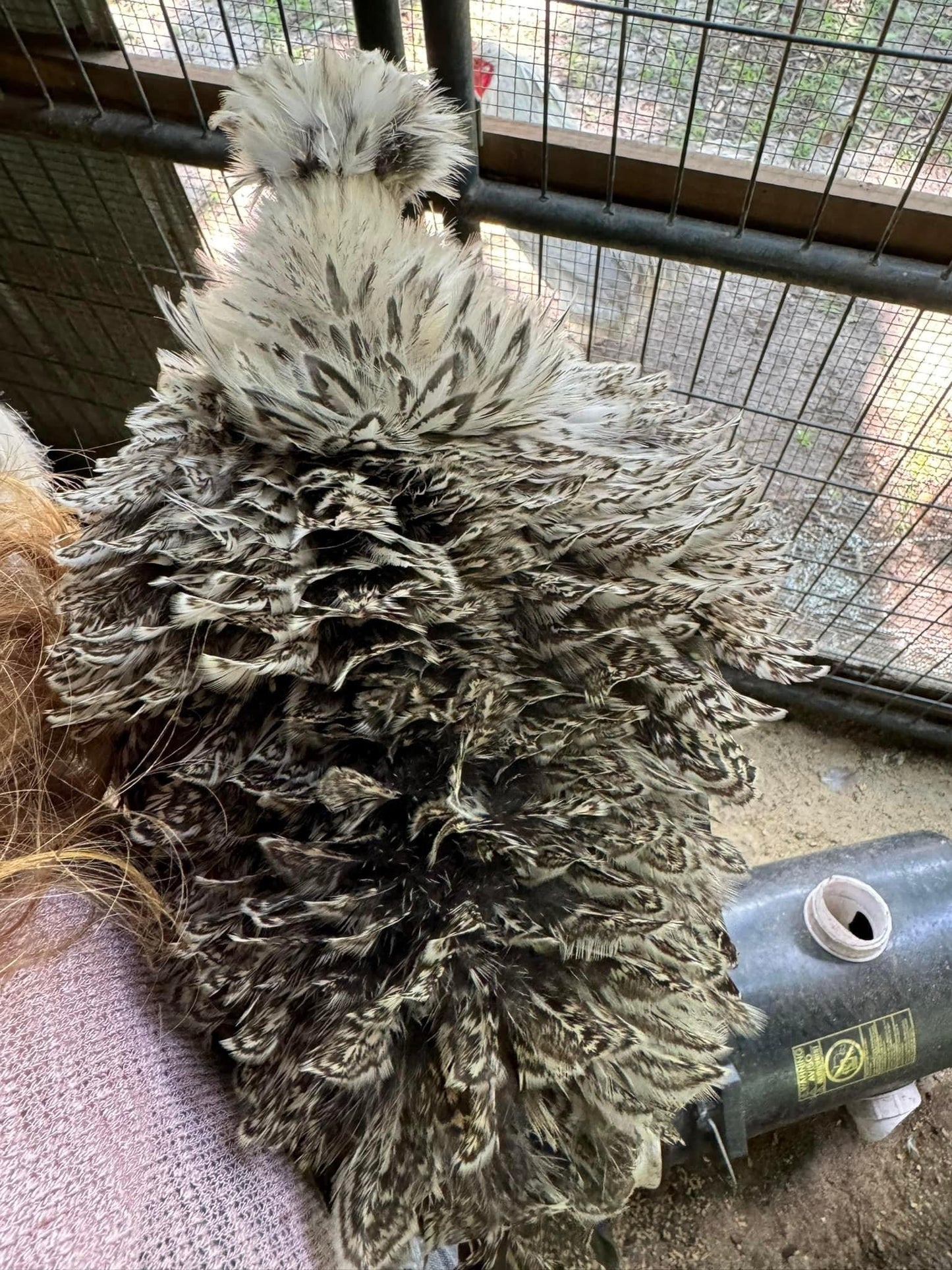



Akers Farm
Blue/Black/Splash SILVER/GOLD Partridge Brahma Hatching Eggs
Share
